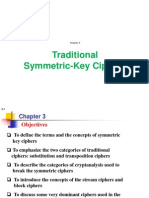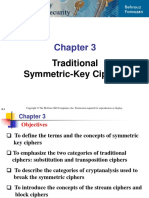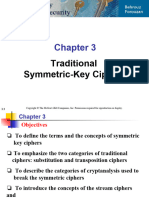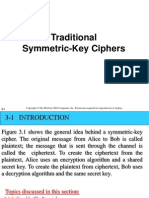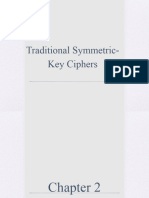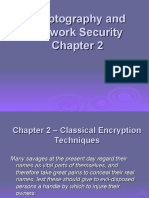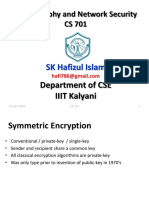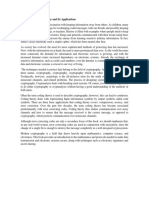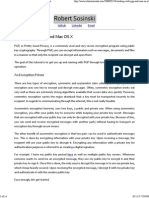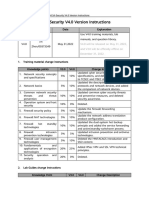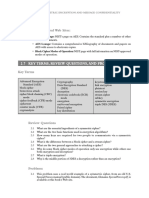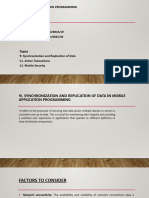0% found this document useful (0 votes)
33 views30 pagesLecture 5b - Symmetric Key Cryptography
The document discusses symmetric-key ciphers, which use a single key for both encryption and decryption, emphasizing the importance of key secrecy based on Kerckhoff’s principle. It outlines various types of cryptanalysis attacks, including ciphertext-only, known-plaintext, chosen-plaintext, and chosen-ciphertext attacks, along with methods to resist these attacks. Additionally, it covers traditional ciphers such as substitution and transposition ciphers, and provides examples of additive, multiplicative, and affine ciphers along with their vulnerabilities.
Uploaded by
ankitsonwani14Copyright
© © All Rights Reserved
We take content rights seriously. If you suspect this is your content, claim it here.
Available Formats
Download as PDF, TXT or read online on Scribd
0% found this document useful (0 votes)
33 views30 pagesLecture 5b - Symmetric Key Cryptography
The document discusses symmetric-key ciphers, which use a single key for both encryption and decryption, emphasizing the importance of key secrecy based on Kerckhoff’s principle. It outlines various types of cryptanalysis attacks, including ciphertext-only, known-plaintext, chosen-plaintext, and chosen-ciphertext attacks, along with methods to resist these attacks. Additionally, it covers traditional ciphers such as substitution and transposition ciphers, and provides examples of additive, multiplicative, and affine ciphers along with their vulnerabilities.
Uploaded by
ankitsonwani14Copyright
© © All Rights Reserved
We take content rights seriously. If you suspect this is your content, claim it here.
Available Formats
Download as PDF, TXT or read online on Scribd
/ 30

